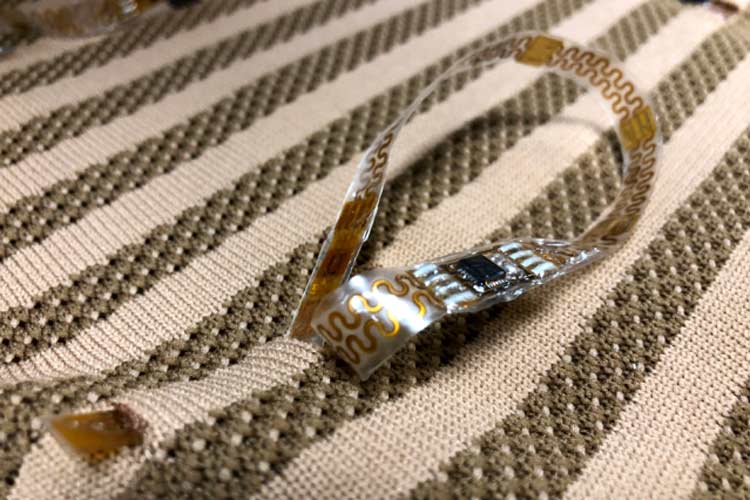Researchers from the Massachusetts Institute of Technology (MIT) have developed a new technique for embedding sensors into clothing fabrics to monitor vital signs like temperature, respiration, and heart rate of the person wearing it. The sensor-embedded garment is machine washable, can be customized to fit the body of the person wearing it. This type of sensing could be used for monitoring people who are ill, either at home or in the hospital, as well as athletes or astronauts.
The technology can also be used for telemedicine, which is particularly useful now during the COVID-19 pandemic for doctors who are increasingly connecting with patients remotely. The textile platform can be customized in a variety of forms, sizes, and functions using standard high-throughput textile-manufacturing and garment-patterning techniques. The garments work by compression, with the sensors touching the skin with a pressure of about 25 mmHg with no compromise on the comfort of the wearer and precision of reading. The suit (garment) is tailored from a customized fabric and can be integrated with a variety of sensors and interconnects as flexible, stretchable electronic strips. The textile platform consists of channels or pockets for weaving the electronic strips.
The sensor ICs and interconnects are developed with the help of two-layer industrial flexible printed circuit board (PCB) processes with additional steps for chip and passive component assembly and encapsulation with thermoplastic polyurethane (TPU) (TE-11C, Dupont) and a washable encapsulant (PE773, Dupont). The E-TeCS can help detect skin temperature with an accuracy of 0.1°C and a precision of 0.01°C, heart rate, and respiration with a precision of 0.0012 m/s2, with the mechano-acoustic inertial sensing. The knit textile electronics can be stretched up to 30% under 1,000 cycles of stretching without significant degradation in mechanical and electrical performance.
For this study, a prototype shirt with 30 temperature sensors and an accelerometer that can measure the wearer’s movement, heart rate, and breathing rate was designed. The garment can transmit the data wirelessly to a smartphone. The polyester blend fabric was chosen for the fact that it has moisture-wicking properties and can conform to the skin easily. It compresses on the person’s body and the active parts of the sensors are exposed to the skin. From the outside, it looks like a normal T-shirt, but inside, electronic parts are touching the wearer’s skin. The garments can be washed with the sensors embedded in them, and the sensors can also be removed and transferred to a different garment.
The shirts can be easily manufactured in different sizes and for people with body types, Also, there are plans to develop other types of garments like pants, and incorporating additional sensors for monitoring blood oxygen levels and other indicators of health.











